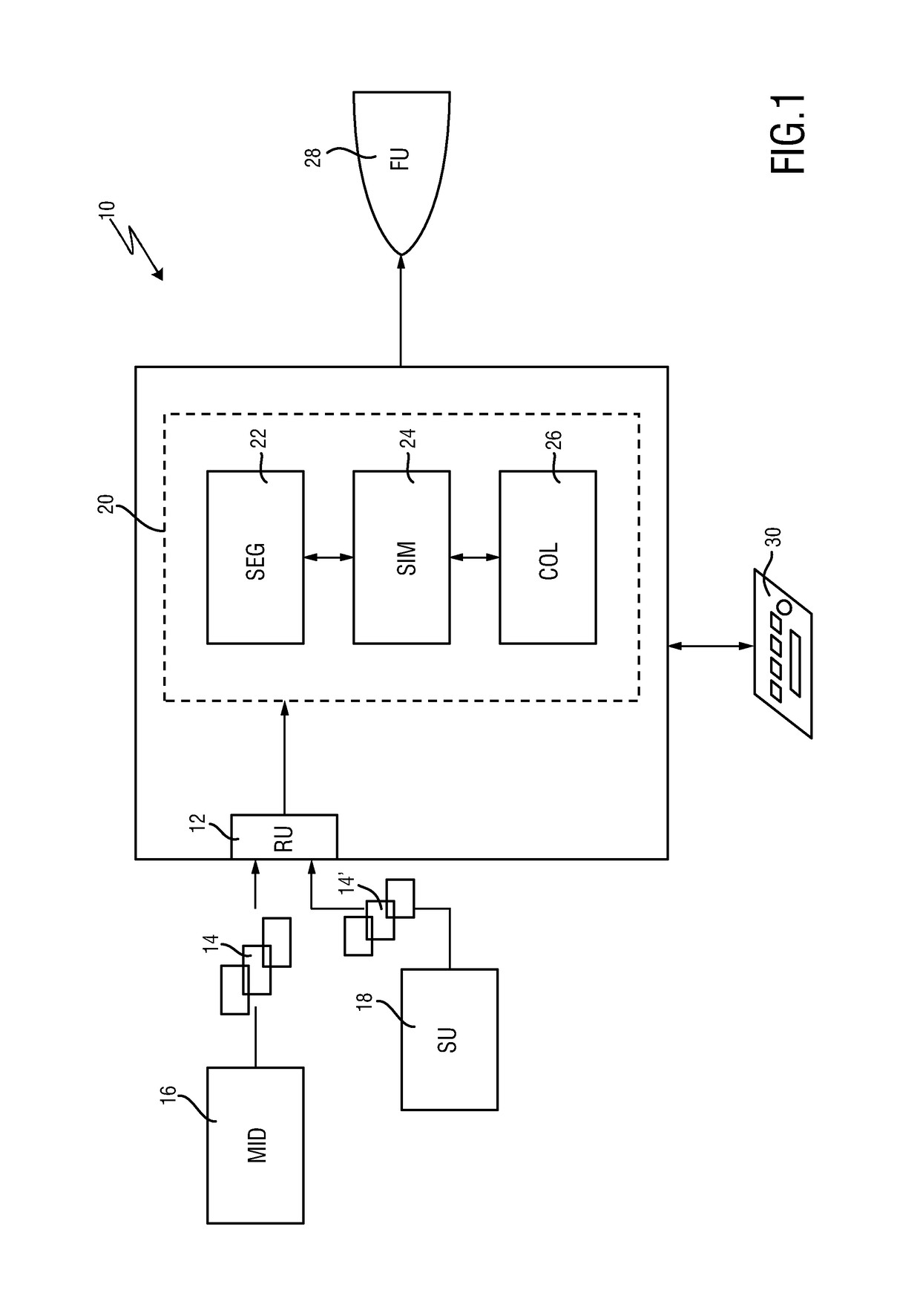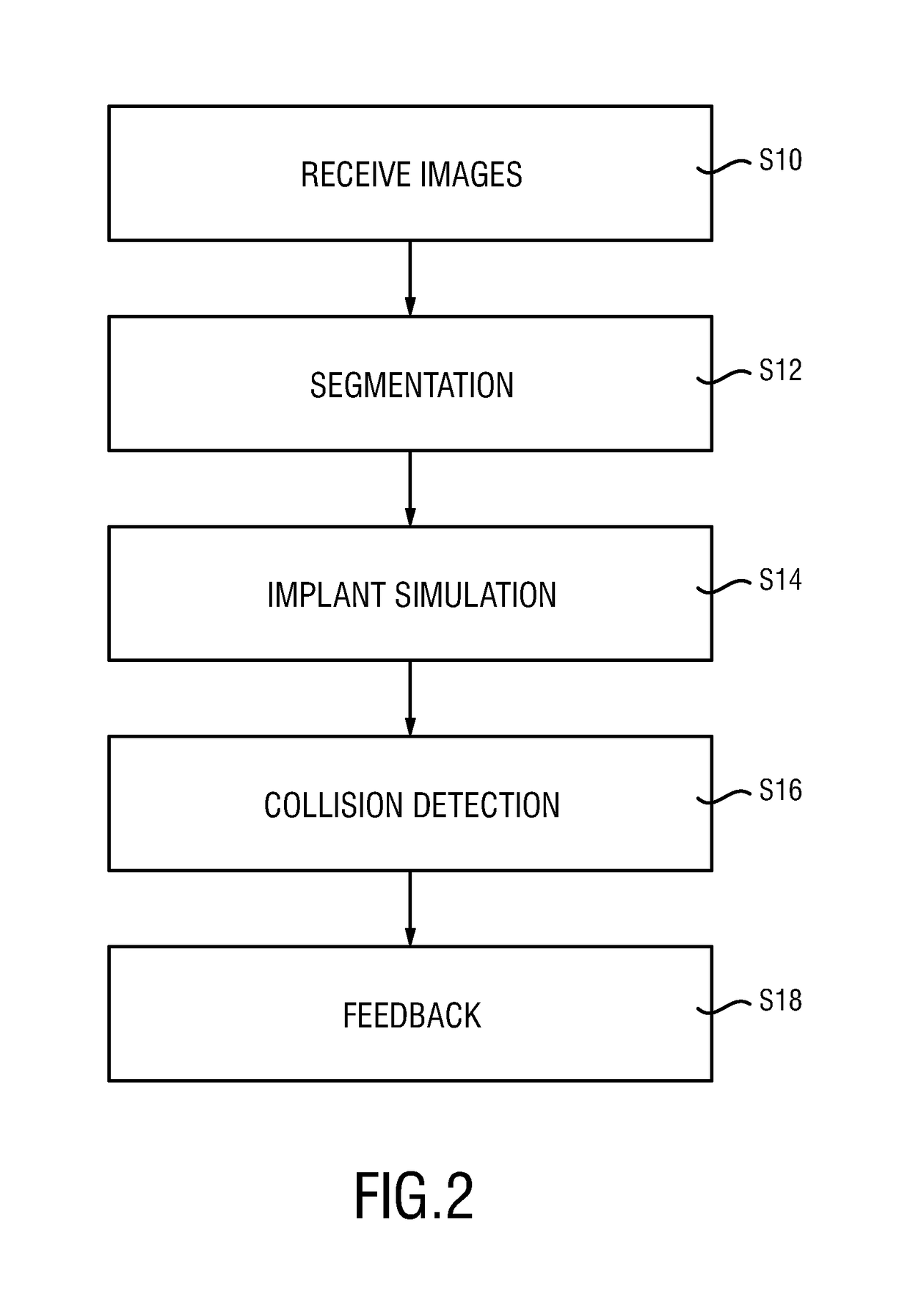Planning an implantation of a cardiac implant
a cardiac implant and imaging system technology, applied in the direction of catheters, instruments, image enhancement, etc., can solve the problems of inability to achieve the effect of reducing the risk of cardiac surgery, affecting the survival of patients,
- Summary
- Abstract
- Description
- Claims
- Application Information
AI Technical Summary
Benefits of technology
Problems solved by technology
Method used
Image
Examples
Embodiment Construction
[0070]FIG. 1 shows a simplified and schematic block diagram to illustrate the principal components of the presented medical imaging system, which may be particularly used for planning an implantation of a cardiac implant. The medical imaging system is therein in its entirety denoted with reference numeral 10.
[0071]It comprises a receiving unit (RU) 12 which is configured to receive a plurality of 3D cardiac images 14. Said plurality of 3D cardiac images 14 is preferably a sequence of timely consecutive frames that are acquired with a medical imaging device (MID) 16. This medical imaging device 16 may be a volumetric CT scanner, an MRI scanner or a 3D ultrasound system. A particular example of a 3D ultrasound system which may be applied for the system of the current invention is the iE33 ultrasound system sold by the applicant, in particular together with an X7-2 t TEE transducer of the applicant or another 3D transducer using the xMatrix technology of the applicant. Even though the ...
PUM
 Login to View More
Login to View More Abstract
Description
Claims
Application Information
 Login to View More
Login to View More - R&D
- Intellectual Property
- Life Sciences
- Materials
- Tech Scout
- Unparalleled Data Quality
- Higher Quality Content
- 60% Fewer Hallucinations
Browse by: Latest US Patents, China's latest patents, Technical Efficacy Thesaurus, Application Domain, Technology Topic, Popular Technical Reports.
© 2025 PatSnap. All rights reserved.Legal|Privacy policy|Modern Slavery Act Transparency Statement|Sitemap|About US| Contact US: help@patsnap.com



